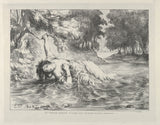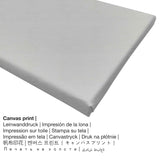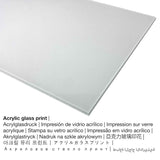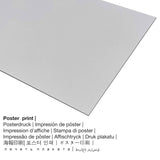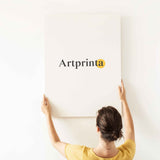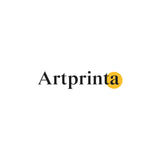Eugène Delacroix, 1843 - Ọnwụ nke Ophelia - ọmarịcha nka
Ụtụ gụnyere. Mbupu gbakọrọ na ndenye ọpụpụ.
The Death of Ophelia bụ onye na-ese ihe Eugene Delacroix n’afọ 1843. Ụdị ihe osise ahụ nwere nha ndị a: Image: 9 15/16 x 7 1/4 in (25,3 x 18,4 cm) Sheet: 11 x 8 9/16 in (28 x 21,8 cm). Lithograph; second state of four was applied by the European artist as the medium of the work of art. This work of art is included in the digital collection of The Metropolitan Museum of Art. With courtesy of Ụlọ ihe ngosi nka nke Metropolitan, New York, Rogers Fund, 1922 (nwere ikike - ngalaba ọha). : Rogers Fund, 1922. E wezụga nke a, alignment nke dijitalụ mmepụta bụ na. odida obodo usoro na nha onyonyo nke 4: 3, meaning that the length is 33% longer than the width. The painter Eugène Delacroix was an artist from France, whose artistic style was mainly Romanticism. The French artist was born in the year 1798 na Saint-Maurice, Val-de-Marne wee nwụọ mgbe ọ dị afọ 65 na 1863 na Paris.
Nhọrọ akụrụngwa ngwaahịa gị
The product dropdown menu gives you the opportunity to select your favorite material and size. Pick your favorite size and material among the following options:
- Mbipụta akwụkwọ mmado (ihe kwaaji): A poster is a printed canvas paper with a granular texture on the surface. It is particularly suited for putting the fine art print with a custom-made frame. Please keep in mind, that depending on the absolute size of the poster we add a white margin of something between 2-6cm around the painting, which facilitates the framing with your custom frame.
- Mbipụta iko acrylic na-egbuke egbuke: A glossy print on acrylic glass, which is often referenced as a plexiglass print, transforms an original into amazing décor. The artwork is being made with state-of-the-art UV direct print technology. This has the impression of rich, sharp colors.
- Metal (aluminium debond mbipụta): Aluminium Dibond prints are metal prints with an outstanding effect of depth. For the Direct Print On Aluminum Dibond, we print the selected work of art onto the surface of the white-primed aluminum material. The white & bright sections of the original artpiece shine with a silk gloss, however without glare. The colors are bright and luminous, fine details of the print appear crisp, and the print has a a matte appearance you can literally feel.
- Mbipụta kwaaji: A printed canvas material mounted on a wood frame. Your printed canvas of your favorite masterpiece will let you turn your into a large artwork. The great advantage of canvas prints is that they are relatively low in weight, which implies that it is easy and straightforward to hang up your Canvas print without the help of any wall-mounts. A canvas print is suited for any type of wall.
Ozi dị mkpa: We strive in order to describe our products as closely as possible and to exhibit them visually. Nonetheless, the pigments of the printed materials and the printing can vary to a certain extent from the presentation on the device's screen. Depending on the settings of your screen and the condition of the surface, color pigments may not be printed one hundret percent realistically. Given that our art prints are processed and printed by hand, there might also be slight differences in the motif's exact position and the size.
Banyere ngwaahịa a
| Bipụta ụdị ngwaahịa: | ọmarịcha nka |
| Usoro mmeputakwa: | mmeputakwa n'ụdị dijitalụ |
| Usoro nhazi: | mbipụta dijitalụ |
| Ihe ngosi: | arụpụtara na Germany |
| Ụdị ngwaahịa: | mmepụta ihe na-achọ |
| Ihe eji eme atụmatụ: | mgbidi gallery, art mmeputakwa gallery |
| Ndepụta: | usoro odida obodo |
| Oke akụkụ onyonyo: | 4: 3 ogologo: obosara |
| Nsonaazụ: | ogologo bụ 33% ogologo karịa obosara |
| Akụrụngwa ị nwere ike ịhọrọ site na: | akwụkwọ mmado (akwụkwọ kwaaji), mbipụta enyo acrylic (nke nwere ezigbo mkpuchi iko), mbipụta ọla (aluminium dibond), mbipụta kwaaji |
| Nhọrọ nha nha mbipụta kanvas (akwa akwa na etiti ihe ndọtị): | 40x30cm - 16x12", 80x60cm - 31x24", 120x90cm - 47x35", 160x120cm - 63x47" |
| Acrylic glass print (nwere ezigbo mkpuchi iko) nhọrọ: | 40x30cm - 16x12", 80x60cm - 31x24", 120x90cm - 47x35" |
| Mpempe akwụkwọ mmado (akwụkwọ kwaaji) nha dị iche iche: | 40x30cm - 16x12", 80x60cm - 31x24", 120x90cm - 47x35" |
| Nhọrọ mbipụta aluminom: | 40x30cm - 16x12", 80x60cm - 31x24", 120x90cm - 47x35" |
| ụba: | ngwaahịa anaghị emebi emebi |
Iberibe nkọwa nka
| Aha nka: | "The Death of Ophelia" |
| Nhazi nka nka: | sere |
| Otu izugbe: | nkà nke oge a |
| Century: | 19th narị afọ |
| Emepụtara n'afọ: | 1843 |
| Afọ nka: | 170 afọ |
| Ọkara nke ihe osise izizi: | lithograph; second state of four |
| Akụkụ nke ihe osise izizi: | Image: 9 15/16 x 7 1/4 in (25,3 x 18,4 cm) Sheet: 11 x 8 9/16 in (28 x 21,8 cm) |
| Ụlọ ihe ngosi nka: | Museumlọ ihe ngosi nka nke Obodo |
| Ebe ebe ngosi nka: | New York City, New York, Njikota Obodo Amerika |
| website: | www.metmuseum.org |
| Ụdị ikike nka: | ngalaba ọha |
| Site n'aka: | Ụlọ ihe ngosi nka nke Metropolitan, New York, Rogers Fund, 1922 |
| Ebe kredit nke ọrụ nka: | Rogers Fund, 1922 |
Tebụl onye na-ese ihe
| Aha onye nka: | Eugene Delacroix |
| Gender: | nwoke |
| Obodo onye nka: | French |
| Ọrụ onye na-ese ihe: | onye na-ese ihe |
| Country: | France |
| nhazi ọkwa: | omenkà nke oge a |
| Ụdị nka: | Ihunanya |
| Ndụ: | 65 afọ |
| Afọ amụrụ: | 1798 |
| Ebe omuma: | Saint-Maurice, Val-de-Marne |
| Afọ ọnwụ: | 1863 |
| Nwuru na (ebe): | Paris |
© Copyright - ikike ọgụgụ isi nke | Artprinta.com
Nkọwa ndị ọzọ sitere na The Metropolitan Museum of Art (© - nke Ụlọ ihe ngosi nka nke Obodo ukwu - www.metmuseum.org)
In 1834 Delacroix began a series of lithographs devoted to Hamlet, creating moody images that mirror the troubled psyche of the prince. Choosing key scenes and poetic passages, the artist's highly personal and dramatic images were unusual in France, where interest in Shakespeare developed only in the nineteenth century. Here, Ophelia, whose mind has become unhinged by the murder of her father Polonius, and rejection by Hamlet, has fallen into a stream while picking flowers, and her water-logged gown will soon drag her down to "muddy death." This sad event takes place offstage and is poetically described in act 4, scene 7 by Queen Gertrude. Gihaut frères published the artist's thirteen-print set in 1843, with a second expanded edition of sixteen issued by Bertauts in 1864. Cooly received at first, the prints eventually were recognized as one of the artist's most significant achievements.

